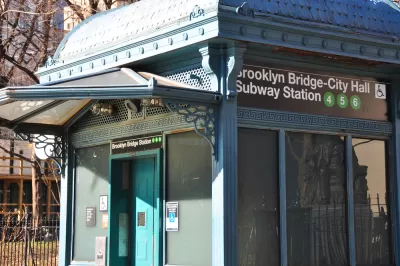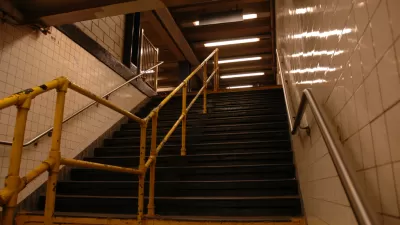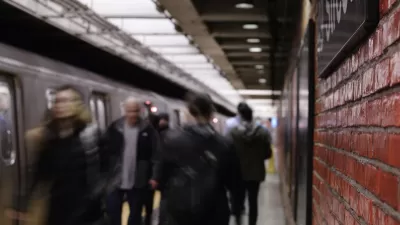After two lawsuits, the New York subway system has announced a 33-year timeline for making 95 percent of its stations fully accessible.

New York City’s subway system will finally become more accessible to people with disabilities or mobility challenges—in 33 years. As Michael Gold reports in The New York Times, “New York has lagged for years behind other major American cities in making its subway system accessible to people with disabilities: Just 126 of its 472 stations, or 27 percent, have elevators or ramps that make them fully accessible.”
As part of a settlement of two lawsuits, the Metropolitan Transportation Authority has committed to adding ramps and elevators to 95 percent of its stations by 2055. “Under the agreement, the transportation authority will make an additional 81 subway and Staten Island Railway stations accessible by 2025. It will make another 85 stations accessible by 2035, 90 more by 2045 and then 90 more by 2055.”
While the New York subway system’s age plays a role in its lack of accessible stations, other cities have done more to retrofit their own older systems. “More than two-thirds of stations in Boston, Philadelphia and Chicago meet the Americans With Disabilities Act’s compliance standards,” Gold notes.
“The changes required by the settlement will benefit a wide band of the populace who struggle to use narrow fare gates or climb subway stairs, including parents toting children in strollers, shoppers carrying large items home and airport travelers with luggage.”
FULL STORY: New York’s Subway System Vows to Be 95 Percent Accessible by 2055

Trump Administration Could Effectively End Housing Voucher Program
Federal officials are eyeing major cuts to the Section 8 program that helps millions of low-income households pay rent.

Planetizen Federal Action Tracker
A weekly monitor of how Trump’s orders and actions are impacting planners and planning in America.

Ken Jennings Launches Transit Web Series
The Jeopardy champ wants you to ride public transit.

Crime Continues to Drop on Philly, San Francisco Transit Systems
SEPTA and BART both saw significant declines in violent crime in the first quarter of 2025.

How South LA Green Spaces Power Community Health and Hope
Green spaces like South L.A. Wetlands Park are helping South Los Angeles residents promote healthy lifestyles, build community, and advocate for improvements that reflect local needs in historically underserved neighborhoods.

Sacramento Plans ‘Quick-Build’ Road Safety Projects
The city wants to accelerate small-scale safety improvements that use low-cost equipment to make an impact at dangerous intersections.
Urban Design for Planners 1: Software Tools
This six-course series explores essential urban design concepts using open source software and equips planners with the tools they need to participate fully in the urban design process.
Planning for Universal Design
Learn the tools for implementing Universal Design in planning regulations.
Heyer Gruel & Associates PA
Ada County Highway District
Institute for Housing and Urban Development Studies (IHS)
City of Grandview
Harvard GSD Executive Education
Toledo-Lucas County Plan Commissions
Salt Lake City
NYU Wagner Graduate School of Public Service





























